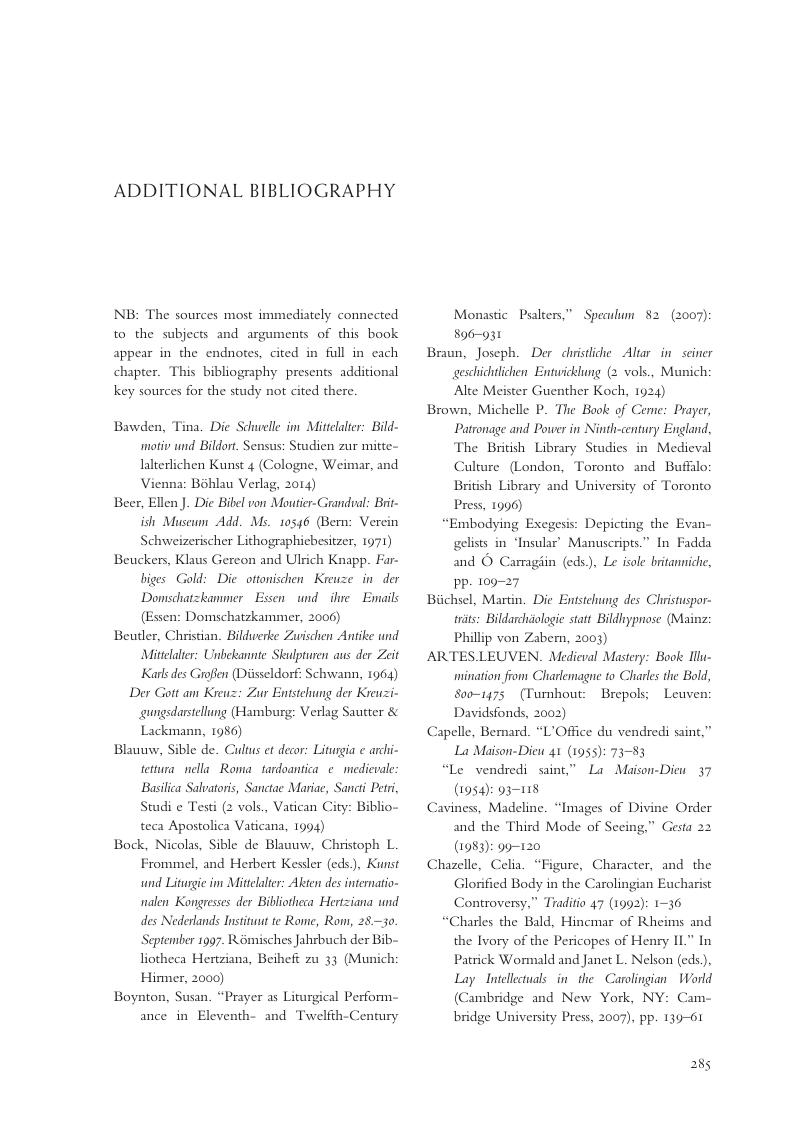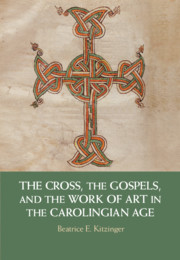Book contents
- The Cross, the Gospels, and the Work of Art in the Carolingian Age
- The Cross, the Gospels, and the Work of Art in the Carolingian Age
- Copyright page
- Epigraph
- Contents
- Figures
- Acknowledgments
- Abbreviations
- Part I The Cross and the Work of Art
- Part II The Cross and the Gospels
- Notes
- Additional Bibliography
- Index
- References
Additional Bibliography
Published online by Cambridge University Press: 15 March 2019
- The Cross, the Gospels, and the Work of Art in the Carolingian Age
- The Cross, the Gospels, and the Work of Art in the Carolingian Age
- Copyright page
- Epigraph
- Contents
- Figures
- Acknowledgments
- Abbreviations
- Part I The Cross and the Work of Art
- Part II The Cross and the Gospels
- Notes
- Additional Bibliography
- Index
- References
Summary

- Type
- Chapter
- Information
- Publisher: Cambridge University PressPrint publication year: 2019



